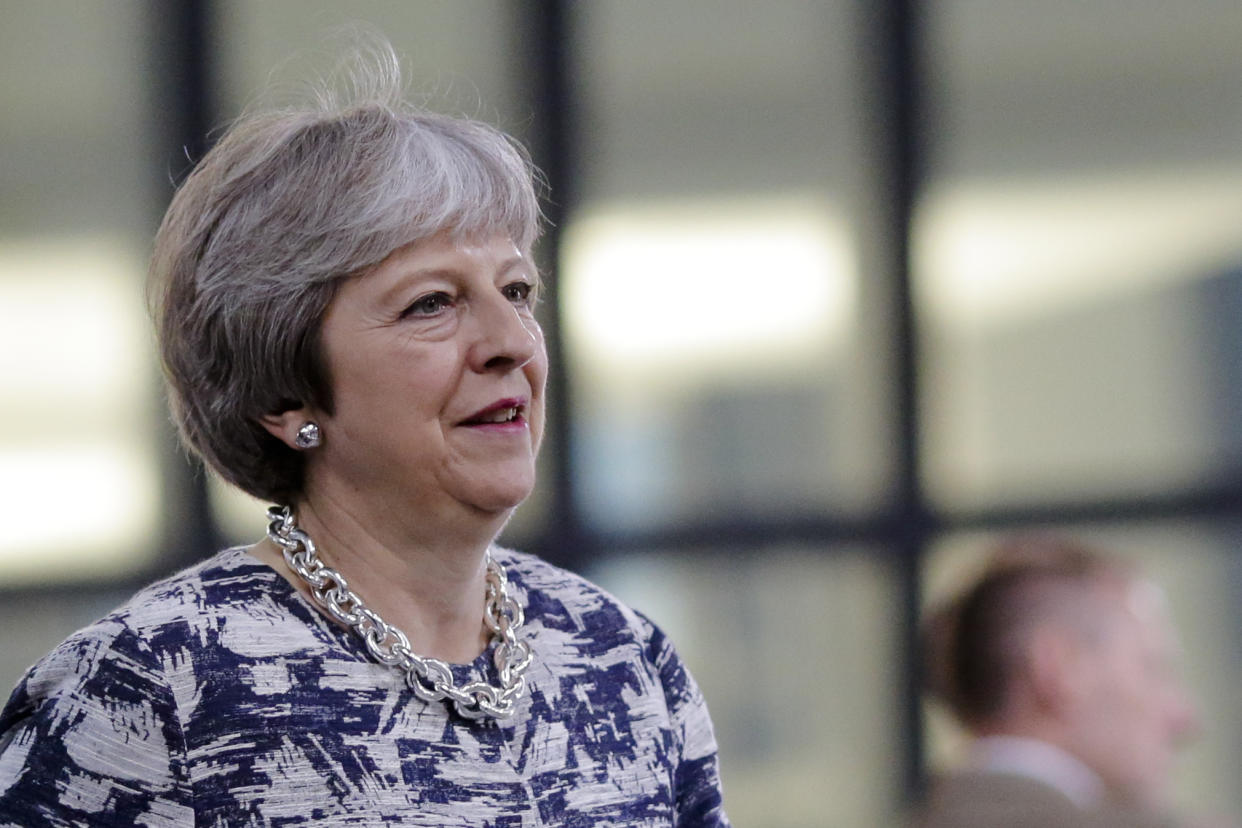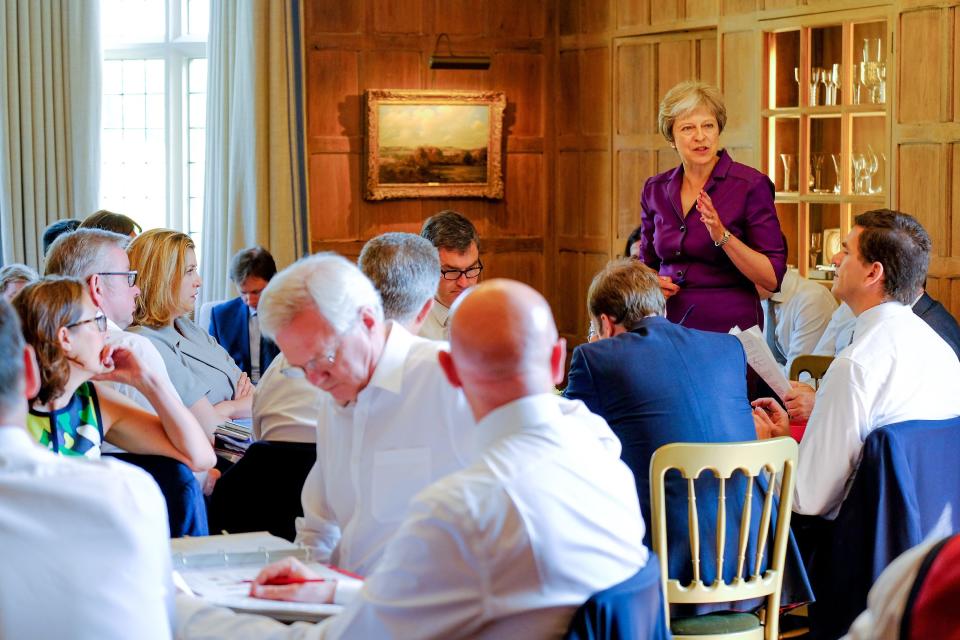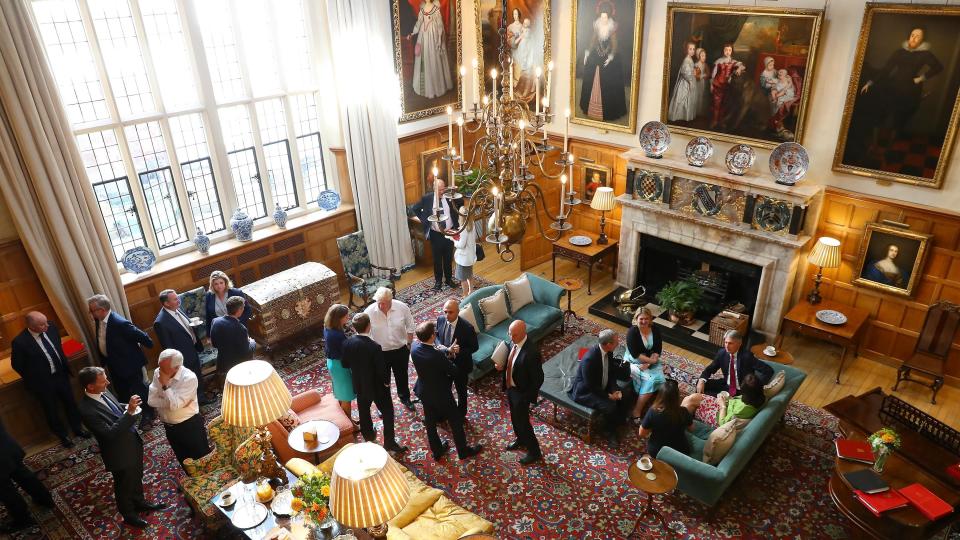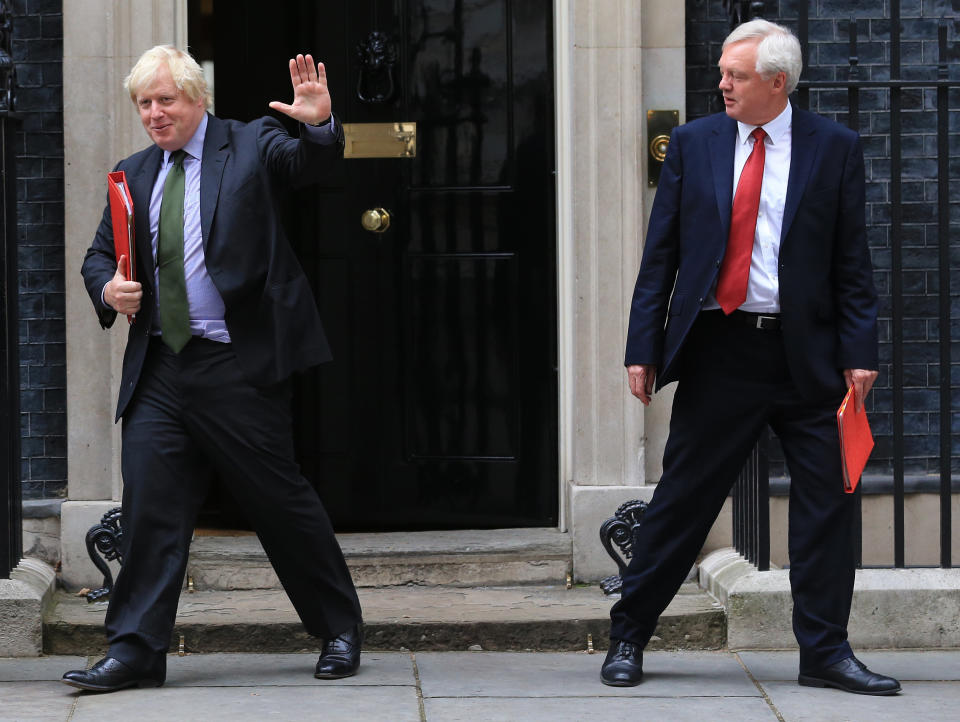Theresa May publishes white paper outlining plans for soft Brexit

Theresa May has published a long-awaited document outlining the government’s plan for its future relationship with the EU as a new poll showed an increasing number of Britons think she is handling the Brexit negotiations badly.
The 98-page white paper confirms that the PM is moving towards a softer style of Brexit
She has proposed an ‘association agreement’ between Britain and Brussels, that maintains a close economic relationship with the bloc.
The contents of the paper were agreed by ministers following last week’s marathon talks at Chequers, the Prime Minister’s country residence.
The plan has enraged hard Brexiteers, who feel the stance is a move towards a soft Brexit that waters down any possible benefits of quitting the EU.
Arch Eurosceptic Jacob Rees Mogg trashed the plans within minutes of publication, comparing it to a disastrous historic treaty between England and France.
Rees Mogg on White Paper – “This is the greatest vassalage since King John paid homage to Phillip II at Le Goulet in 1200. This White paper has not needed age to turn yellow. " – just in case it wasn't clear, he says he won't vote for it
— Laura Kuenssberg (@bbclaurak) July 12, 2018
Brexit secretary David Davis and foreign secretary Boris Johnson both quit in protest against the plans earlier this week, telling Theresa May they could not get behind her latest position.

“It’s bold, it’s ambitious but it’s also pragmatic,” he told BBC Radio 4’s Today programme.
But the public response has been lukewarm, at best. Since the crunch talks at Chequers, public confidence in the Tories’ handling of Brexit has plummeting to record lows, with 75% of people now of the opinion that the government is handling Brexit badly.
And 40% now think that the UK is aiming for a Brexit that is too soft, and only one in eight people think the PM’s approach is just right.
In just a few days in the aftermath of Chequers the proportion of Brits who think the government is handling Brexit badly has jumped from 66% to 75% https://t.co/B5q6sOVTVC pic.twitter.com/ZGHLEpBIR0
— YouGov (@YouGov) July 12, 2018
The Prime Minister's approach to Brexit is…
Too soft – 40%
Too hard – 12%
About right – 13%https://t.co/B5q6sOEj44 pic.twitter.com/wzRBIaH2I9— YouGov (@YouGov) July 12, 2018
What does the white paper say?
The Brexit white paper spells out the relationship the government hopes to agree with the EU after Brexit.
Key elements of the proposals include:
A free trade area for goods
New arrangements for services, giving each side the freedom to set their own rules
An end to free movement, with new ‘mobility’ regulations allowing visa-free travel for tourists and workers
Continued security co-operation, participation in Europol and a range of EU agencies
A formal institutional framework bringing leaders and ministers from the UK and EU together in a governing body with regular summits
A ‘robust’ independent panel to arbitrate on disputes, so that neither side’s courts have the final say;
The PM’s suggestions outline a ‘common rulebook’ for goods, including agricultural products, and commit the UK to ‘continued harmonisation’ with EU rules. This stance aims to avoid the need for friction at the border between the UK and EU, specifically in Northern Ireland.
In terms of trade policy, the document says that Parliament must have the ability to decide its own trade policy and can choose to diverge from EU rules in certain circumstances.
The paper also suggests a ‘facilitated customs arrangement’ between the EU and Britain, still allowing the UK to set its own tariffs for trade.

Why is it controversial?
Hardline Eurosceptics have reacted with fury over Theresa May’s white paper, which they deem to represent a move towards a soft Brexit.
A number of Brexiteers have voiced concerns over the proposals, with David David and Boris Johnson both resigning from their ministerial posts after refusing to put their weight behind the position.

In his resignation letter, Mr Johnson said the plans represent a ‘semi-Brexit’ that would leave the UK with ‘the status of colony’.
Mr Davis said the government’s proposals would leave Britain in ‘at best a weak negotiating position, and possibly an inescapable one’.
Arch-Brexiteer Jacob Rees-Mogg called the plans a ‘breakdown in trust’ that would leave the UK ‘subject to European laws’.
MOST POPULAR TODAY ON YAHOO
BBC pay: List of highest paid stars reveals men still receive more than women
Little-known STI that can leave women infertile ‘could become a superbug within 10 years’
What does the EU think?
The EU responded cautiously to the government’s initial proposals, warning that only by staying in the single market and customs union could the UK guarantee frictionless trade.
We will now analyse the #Brexit White Paper w/ Member States & EP, in light of #EUCO guidelines. EU offer = ambitious FTA + effective cooperation on wide range of issues, including a strong security partnership. Looking forward to negotiations with the #UK next week.
— Michel Barnier (@MichelBarnier) July 12, 2018
Michel Barnier, the EU’s chief negotiator, said yesterday: ‘We will look carefully at each and any proposal of UK, but these proposals must be workable.
‘Only the combination of the single market and the customs union makes frictionless trade possible. Outside of the customs union there need to be procedures and customs controls.
‘And outside of the single market you necessarily have controls to check compliance with European standards.
‘As a consequence there will be no business as usual because of the Brexit. And we should all get ready for all scenarios, including a no-deal scenario.’

 Yahoo News
Yahoo News 

